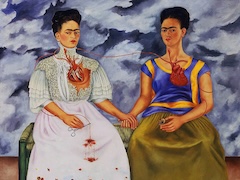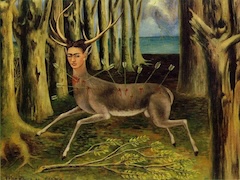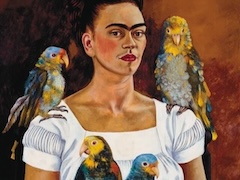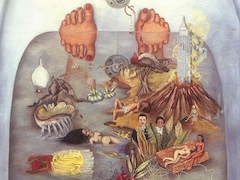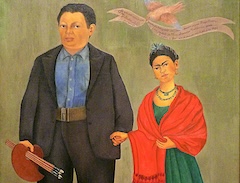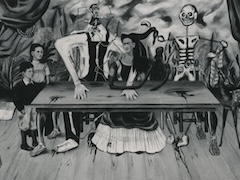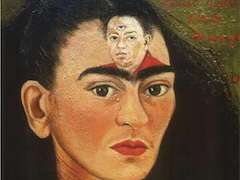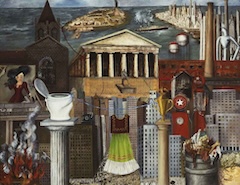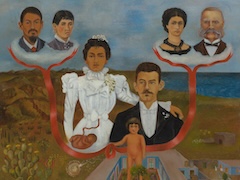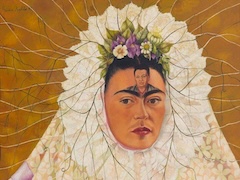The Suicide of Dorothy Hale, 1938 - by Frida Kahlo
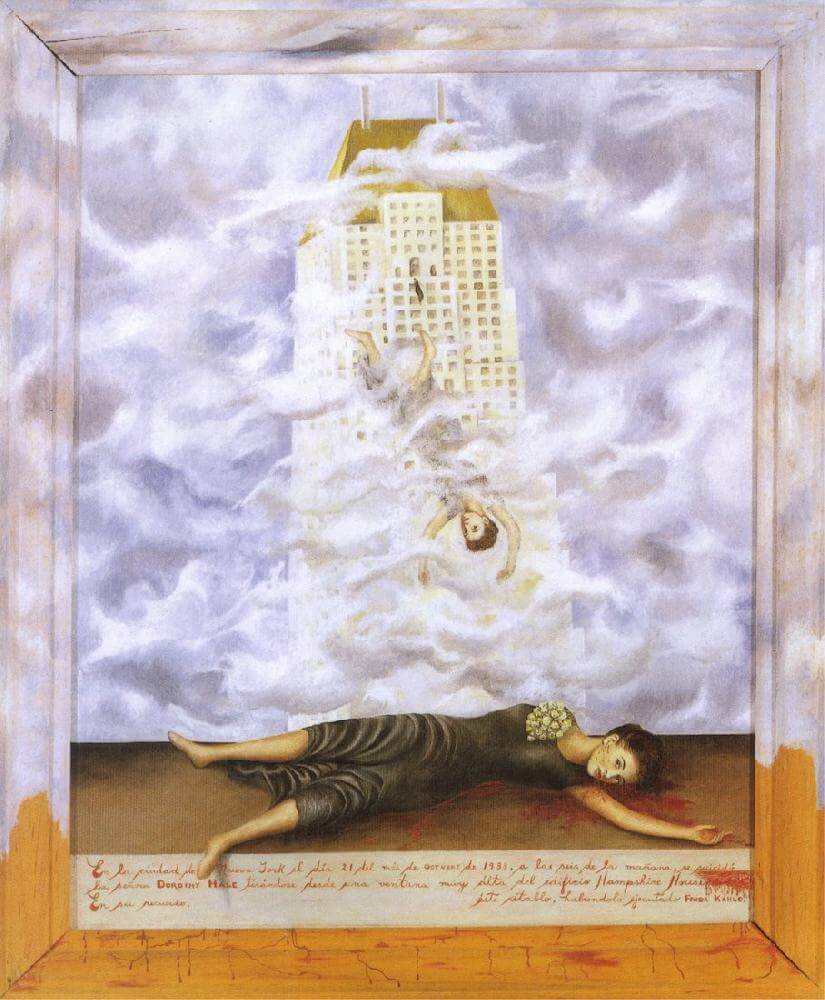
Dorothy Hale is an American act and Ziegfeld showgirl. After her husband was killed in a car accident, she had a few unsuccessful relationships and her career was failing. Left in severe financial trouble and had to live depending on her wealthy friends, she committed suicide on October 21, 1938. She jumped off from the top window of her luxury apartment suite in New York in her favorite black dress with a corsage of small yellow roses.
Clare Boothe Luce, who is Dorothy's close friend and an admirer of Frida Kahlo, also the publisher of the fashion magazine "Vanity Fair", almost immediately commissioned Kahlo to paint a "recuerdo" (remembrance) portrait of their deceased mutual friend with $400. Clare intended to give this portrait to Dorothy's grieving mother as a gift. She presumed Frida Kahlo would paint a normal portrait of Dorothy, which you can hang over the fireplace. But when the painting arrived in August 1939 and unwrapped, Clare was so shocked and almost passed away. She was seriously thinking of destroying it but friends convinced her not to.
This painting is one of Frida's most shocking and controversial painting, which depicted the details of every step of Hale's suicide. It shows Hale standing on the balcony, falling to her death while also lying on the bloody pavement below. Frida painted it in the style of an "ex-voto (retablo)". At the bottom, blood red lettering details the tragic event:
In New York City on the 21st of October 1938, at 6:00 in the morning, Dorothy Hale committed suicide by throwing herself from a very high window in the Hampshire House. In her memory [...], this retablo was executed by Frida Kahlo."
At Clare's request, sculptor Isamu Noguchi paint out the part of the legend that has Luce's name, which was once read "painted at the request of Clare Boothe Luce, for the mother of Dorothy". She also had another change made: an angel that once appeared at the top was removed.
Clare gave the painting to her friend Frank Crowninshield and after Frank passed away his son returned it to Clare's family. After that this painting was left in storage for decades. It was donated it anonymously to the Phoenix Art Museum and is on display over there.
At the time this painting was painted, Frida was going through the separation from Diego and was in deep depression and having thoughts of suicide on her mind. This painting may be a reflection Frida's compassion for women who are driven to despair by male desertion.

